The Town of Belley in the Early History of the Society of Mary
Part 1 of 2
Introduction
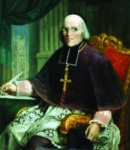
Bishop Raymond Devie
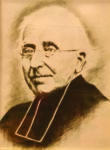
Fr Jean Claude Colin
Belley was and is a cathedral town, the see of the Diocese of Belley, now the Diocese of Belley-Ars. Founded as a diocese in the 5th century and disestablished during the French Revolution, it was restored as a diocese in 1823. Tradition has it the Belley became Christian in the 2nd century, evangelised by Sts Marcellus and Valerian, who were friends of St Pothinus (see MM, October 2018, pp 32ff).
The town is at the southern end of the Bugey mountains. In 1832, its population was 4,286; in 2016, a little over 9,000.
On 22 June 1825, Bishop Raymond Devie moved the Marist priests to Belley from Cerdon, in the north of the Bugey area. The Marist Sisters left Cerdon five days later, on the night of 27 June.
It was in Belley that Fr Jean Claude Colin, the Founder of the Society of Mary, began to see how education could be significant in the mission of the Society. While he was teaching at the college there, he wrote a fine and comprehensive essay entitled 'Advice to the Staff of the College of Belley'.
It was also in Belley that the branches of the Marist family began to take shape: Marist Fathers and Brothers, Marist Sisters and Marist Laity.
In Belley, his confreres elected Fr Colin as superior general of the Society, and Marists first professed their vows.
Lamartine
– college and minor seminary
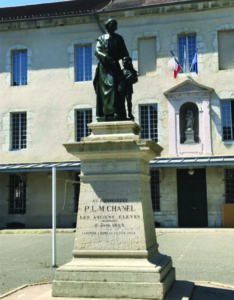
Lamartine – Statue of St Peter Chanel, with the statue of Mary placed by Fr Colin in 1833 in the background
The Marist priests living in Belley – Frs Jean Claude and Pierre Colin, and Frs Déclas and Jallon -- were part of Bishop Devie's diocesan missionary group. They conducted missions in the Bugey for the next four years, based at the minor seminary for the diocese, which also served as a day school for local boys. They were already known as Marists.
The missioners lived in cramped conditions on the top floor of the college. The seminary staff treated them poorly. The rector, Fr Jean-Francois Guigard, was hostile towards them, and the staff and students imitated his attitude. Déclas, a rough and ready character given to idiosyncratic gestures, was subject to frequent ridicule. The Marists were resented and subject to jealousy. One joke aimed at them was, "here at Belley, we have the second volume of the Jesuits, bound in the hide of an ass" (Origines Maristes [OM] 535:24).
Fr Colin spoke of this time:
"We suffered quite a lot in this house... You could hardly call it warm, and we were not too well off up there in the little corner we occupied. They passed my room on the way to the chapel, and when I was sleeping, they woke me up. So I stopped sleeping. ... My brother suffered the most because he was in charge of the sisters, and we were out on the mission during the winter. He was there all the time. ... Still, it was the most wonderful year of my life. We were poor, four poor priests — not famous men. They jeered at us now and then, and they were so right. Who were we? We were hardly fit for anything except to be trampled underfoot. They would willingly have spat on us" (OM 514:5; cf OM 425:16).
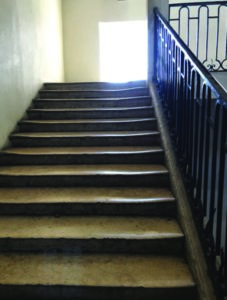
Corridor and stairway at Lamartine, much as they were when the Marists were there
The situation at the college changed in September 1826, when Bishop Devie appointed Fr Jean-Félix Pichat as the seminary rector. He was supportive of the Marists, and his attitude to them transformed the mindset of the college. The poor treatment, which had amounted to persecution, ceased. Fr Pichat appointed Fr Pierre Colin as spiritual director of the college. Fr Jean Claude Colin told Fr Champagnat, "we are happy; the college is in the hands of the Society; we are quite united to Fr Pichat, who is more than ever committed to the project" (OM 169:2). As far as Fr Colin was concerned, Fr Pichat was a Marist, and his name is the first on the gravestone marking the Society of Mary plot in the Belley cemetery.
When Fr Pichat died in 1829, Bishop Devie appointed Jean Claude Colin to replace him as rector. Fr Colin was later to remark, "When Bishop Devie named me superior of the minor seminary, I suffered martyrdom. I went to him eleven times to implore him not to demand this sacrifice of me" (Hosie, p 96). Bishop Devie insisted.
There was considerable animosity among the staff and students regarding the Marists. Fr Colin displayed both firmness and understanding in doing what he needed to do to improve the atmosphere of the school, showing himself to be a true educationalist, though it cost him much in terms of his health. Fr Mayet recorded that Fr Colin's hair turned white during this year (OM 2:476).
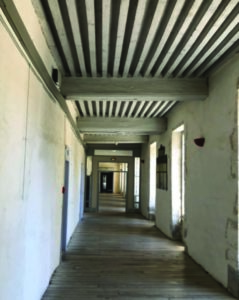
Corridor and stairway at Lamartine, much as they were when the Marists were there
The school today is known as the Institute Lamartine, named after the French poet who was a student there from 1803 until 1807. In the college chapel, there are statues of two men who were spiritual directors at the school during the period 1832 to 1844. They are both canonised saints, St Peter Chanel and St Peter Julian Eymard.
Fr Colin chose Mary as superior and model for the school, and the statue of Mary above the courtyard was placed there in 1833.
In 1830, Fr Colin had been elected as superior of the Marist groups living in Lyons and Belley. At Bishop Devie's insistence, he remained the superior of the college for sixteen years, but he left the day-to-day running of it to his vice superiors.
The diocese resumed responsibility for the college in 1845, Fr Colin having persuaded Bishop Devie that this would be for the best.
Bon Repos
The Marist Sisters’ house in Cerdon was dreadfully cramped. When he saw this, Fr Claude-Joseph Ruivet, the vicar general of the diocese, wrote to Bishop Devie asking for help for them. The bishop offered them his summer house, Bon Repos, in Belley. To the distress of the townsfolk who had hoped they would stay, the sisters left Cerdon, setting out on foot behind a horse-drawn cart carrying their possessions at midnight on 27 June 1825. The ten sisters and five postulants arrived in Belley in pouring rain at midday a day and a half later. At that stage, Bon Repos was made up of a small house and a barn. For 12 years, the barn was the chapel. Bishop Devie received the first vows of the sisters there on 6 September 1826.
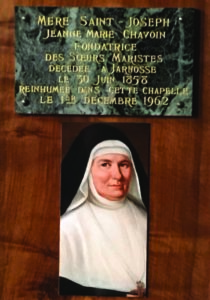
"Mother St Joseph, Jeanne Marie Chavoin, Foundress of the Marist Sisters, died at Jarnosse, 30 June 1838, Re-interred in this Chapel, 1 December 1962", Bon Repos, Belley
Bon Repos was the ‘motherhouse’ of the Marist Sisters from 1825 until 1891, and Jeanne-Marie Chavoin’s body rests in the chapel there. Nowadays, it is a retirement centre, with a small community of Sisters. The Centre J-M Chavoin has historical displays, and Sr Teri O'Brien SM provides assistance to visit the Marist places nearby and in the Bugey.
St Peter Chanel’s sister was one of the Sisters at Bon Repos, and he visited her there before he left for Oceania in 1836.
Most days, Fr Colin was a visitor at Bon Repos, meeting Jeanne-Marie formally in the parlour. Hosie notes that it was only Jeanne-Marie who could take Colin to task for his carelessness with his health and appearance – “She tried to tidy up his dishevelled hair and his snuff-splattered cassocks, to make him eat regularly, dress warmly and submit to the luxury of a winter fire. He obediently reported to her his migraines and the intestinal colic that plagued him almost continuously” (Hosie, p. 136). When Fr Colin called in, and Jeanne-Marie was busy, he would talk to the sisters as they worked. When Jeanne-Marie went looking for him, “she could always locate him by the peals of laughter from the group of Sisters he was currently entertaining with his stories” (Hosie, p. 156).
In her memoirs, Sr Jean Baptiste wrote,
"Fr. Colin often came to … our convent of Bon Repos, to ask the sisters’ prayers. 'I would like a novena'. 'Father, we are making one', came the reply. 'Well, make a second, a third if necessary, until the grace is granted'. And then I have seen the Sisters leave their work at once and kneel to say the Rosary to obtain the desired grace" (RMJ Doc. 253:1).
By 1833, Bon Repos was bursting at the seams, with 38 sisters. Jeanne-Marie Chavoin, Mother St Joseph, had to delay or turn away those who wished to be postulants.
Remembering those early days, Jeanne-Marie wrote,
"We were very hard up in our early days; often we spent ten days with only a few pence in hand. I slept for a month in a room so cold that in the morning I was frozen and there was hoar frost under my bed. But how happy we were! We were never more contented than when the purse was nearly empty. At that time we were as light-hearted and simple as children: the greatest charity reigned among us. Never a harsh word. Such happy periods are blessings attached to the poverty of beginnings" (RMJ Doc.104:1 7).
 Entries(RSS)
Entries(RSS)